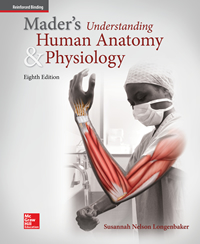1 A) the structure of a part B) the structural relationship of one part with another structure. C) how structures function. D) A and B only. 2 A) organism B) organelle C) organ D) tissue 3 A) atom B) cell C) organ D) tissue 4 A) cell B) organelle C) organ D) macromolecule 5 A) atoms B) organelles C) organs D) tissues 6 A) molecule, atom, organelle, cell, tissue, organ, organ system, organism B) atom, molecule, organelle, cell, tissue, organ, organ system, organism C) atom, molecule, organelle, tissue, cell, organ, organ system, organism D) 4) atom, molecule, organelle, cell, organ, tissue, organ system, organism 7 A) organ. B) organelle. C) cell. D) tissue. 8 A) standing erect B) palms facing backward C) arms at sides D) toes facing forward 9 A) superior B) inferior C) anterior D) central 10 A) anterior B) lateral C) posterior D) superior 11 A) lateral B) anterior C) medial D) B and C, but not A 12 A) deep B) distal C) proximal D) A and B, but not C 13 A) anterior B) distal C) medial D) proximal 14 A) anterior B) distal C) lateral D) proximal 15 A) closer to a point of attachment B) further from a point of attachment C) closer to the midline D) further from the midline 16 A) distal B) lateral C) medial D) proximal 17 A) lateral B) superficial C) superior D) deep 18 A) ipsilateral B) anterior C) contralateral D) peripheral 19 A) dorsal B) lateral C) proximal D) ventral 20 A) appendicular portion B) axial portion C) pelvis D) trunk 21 A) brachial B) antecubital C) acromial D) antebrachial 22 A) oral B) mental C) buccal D) otic 23 A) acromial B) brachial C) axillary D) sternal 24 A) femoral B) patellar C) popliteal D) crural 25 A) back of the head B) cavity of the eyes C) cheek D) elbow 26 A) arm B) chest C) forearm D) leg 27 A) calf B) forearm C) kneecap D) thigh 28 A) coronal B) frontal C) transverse D) sagittal 29 A) coronal B) sagittal C) frontal D) A and C, but not B 30 A) ventral B) dorsal C) thoracic D) pericardial 31 A) ventral B) dorsal C) thoracic D) Both A and C, but not B 32 A) ventral B) dorsal C) abdominopelvic D) cranial 33 A) diaphragm B) mediastinum C) sternum D) ventral cavity 34 A) dorsal and thoracic cavities B) thoracic and abdominopelvic cavities C) cranial and thoracic cavities D) dorsal and abdominopelvic cavities 35 A) thoracic B) mediastinum C) meninges D) parietal 36 A) visceral pleura B) parietal pleura C) visceral pericardium D) parietal peritoneum 37 A) parietal pleura. B) parietal pericardium. C) visceral peritoneum. D) visceral pericardium. 38 A) heart B) lungs C) thymus gland D) trachea 39 A) heart B) stomach C) liver D) urinary bladder 40 A) right lumbar region B) left iliac region C) right hypochondriac region D) hypogastric region 41 A) Liver B) Gall bladder C) Small intestine D) Stomach 42 A) upper left B) lower left C) upper right D) lower right 43 A) upper left B) lower left C) upper right D) lower right 44 A) cardiovascular system B) muscular system C) skeletal system D) integumentary system 45 A) nervous and cardiovascular systems B) nervous and endocrine systems C) cardiovascular and endocrine systems D) respiratory and cardiovascular systems 46 A) urinary system B) cardiovascular system C) endocrine system D) digestive system 47 A) integumentary system B) cardiovascular system C) digestive system D) endocrine system 48 A) testes B) ovaries C) femur D) thyroid 49 A) pericarditis - lungs B) meningitis - brain and spinal cord C) pleurisy - stomach D) peritonitis - heart 50 A) hemostasis. B) regulation. C) homeostasis. D) systemic 51 A) control center B) effector C) artery D) sensor 52 A) negative feedback. B) positive feedback. 53 A) homeostasis B) positive feedback C) negative feedback D) homeothermic 54 A) chronic B) systemic C) acute D) local 55 A) chronic B) systemic C) acute D) local 56 A) MRI B) PET C) X-Ray D) CAT 57 A) x-rays B) CT scan C) MRI D) PET





